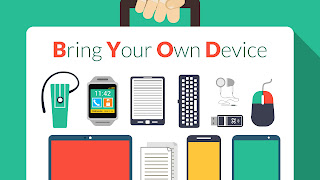Twitter Feed
Thank You GetVoIP!!
Thank you for the honor of being named a “Top 100 Cloud Professionals to Follow on G+”! Congratulations also to my 99 colleagues. Read more at: ↑ Grab this Headline…
Facilitators Announced For NGA Agile Cloud Brainstorming Event
The Information Technology Acquisition Advisory Council (ITAAC) and the Telecommunications Industry Association (TIA) are announcing a slate of innovative leaders to serve as facilitators for the upcoming “Agile Sourcing Environment…
MBO Partners Spotlights GovCloud Founder Kevin L. Jackson
Associate Spotlight Interview with Kevin L. JacksonMBO Associate Since 10/2013 1) Tell us a little bit about what you do.I am the CEO and founder of GovCloud Network, LLC. In…
ITAAC/ICH and TIA To Host Commercial Cloud Sourcing Brainstorming Session for NGA
The Information Technology Acquisition Advisory Council (ITAAC) and Telecommunications Industry Association (TIA) are honored to team with NGA in hosting the first “Agile Sourcing Environment for Commercial Cloud” brainstorming session,…
Author and Tech Strategist Melvin Greer Profiled by WashingtonExec
Congratulations to my NCOIC colleague and dear friend Melvin Greer on his impressive WashingtonExec interview. A senior fellow and chief strategist at Lockheed Martin, Mel has more than 29 years’…
IT Risk Management Summit – March 26, 2013 – Reston, VA
In response to growing demand for formal software risk and quality management tools, the nations’ most respected standards bodies and IT communities of practice have joined forces to advance the…
PerspecSys Survey Reveals Cloud-based Security Concerns for 2014
Today PerspecSys announced the results of a survey conducted at the 2014 RSA Conference concerning the attitudes and policies of organizations towards cloud-based security. After polling 130 security professionals on…
NCOIC Debuts Roadmap for Designing, Managing Cyber-secure Hybrid Computing Environment
Open process by the Network Centric Operations Industry Consortium uses cloud infrastructure to cut computing costs in half and enable collaboration by different systems and users WASHINGTON—March 5, 2014—The Network…
Why State & Local Governments Should be Prepared for Cloud
You are invited to attend the Cloud Webinar Series: Why State & Local Governments Should be Prepared for Cloud. This educational webinar is brought to you by RISC Networks, and…
IBM Hybrid Cloud Debate: Experts debate: Are Hybrid Clouds the End All Be All?
A hybrid cloud may become the solution as the debate between public vs private cloud becomes so 2013. The industry’s experts will debate on when the hybrid clouds are and…
- Increased employee mobility (63%), satisfaction (56%) and productivity (55%) dominate as the top drivers of BYOD. These employee related drivers are considered more important than reduced costs (47%).
- Security (39%) and employee privacy (12%) are the biggest inhibitors of BYOD adoption.
- 20% of surveyed organizations have suffered a mobile security breach, primarily driven by malware and malicious WiFi.
- Security threats to BYOD impose heavy burdens on organizations’ IT resources (35%) and help desk workloads (27%).
- Despite increasing mobile security threats, data breaches and new regulations, only 30% of organizations are increasing security budgets for BYOD in the next 12 months and 37% have no plans to change their security budgets.
- 72% – Data leakage/loss
- 56% – Unauthorized access to company data and systems
- 54% – Downloading of unsafe apps or content
- 52% – Malware
- 50% – Lost or stolen devices
- 49% – Vulnerability exploitation
- 48% – Lack of control on endpoint security
- 39% – Infrequent software updates
- 38% – Compliance
1. Create your policy before procuring technology: To effectively use mobile device management (MDM) technology for employee owned devices Policy must precede technology. Also note that these policies will have broad corporate-wide implications for IT, HR, legal, and security.
- Mobile device management
- Application security assessments
- Application testing services
- Application source code security assessments; and
- Embedded device security.
This post was brought to you by IBM Global Technology Services. For more content like this, visit ITBizAdvisor.com.
( Thank you. If you enjoyed this article, get free updates by email or RSS – © Copyright Kevin L. Jackson 2017)
Cloud Computing
- CPUcoin Expands CPU/GPU Power Sharing with Cudo Ventures Enterprise Network Partnership
- CPUcoin Expands CPU/GPU Power Sharing with Cudo Ventures Enterprise Network Partnership
- Route1 Announces Q2 2019 Financial Results
- CPUcoin Expands CPU/GPU Power Sharing with Cudo Ventures Enterprise Network Partnership
- ChannelAdvisor to Present at the D.A. Davidson 18th Annual Technology Conference
Cybersecurity
- Route1 Announces Q2 2019 Financial Results
- FIRST US BANCSHARES, INC. DECLARES CASH DIVIDEND
- Business Continuity Management Planning Solution Market is Expected to Grow ~ US$ 1.6 Bn by the end of 2029 - PMR
- Atos delivers Quantum-Learning-as-a-Service to Xofia to enable artificial intelligence solutions
- New Ares IoT Botnet discovered on Android OS based Set-Top Boxes


